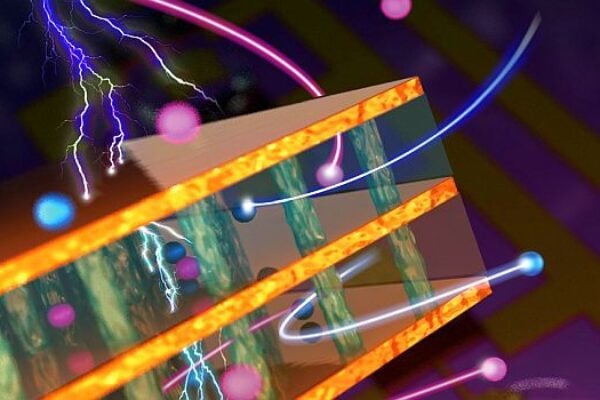Researchers at Northwestern University say they have developed a revolutionary transistor that is expected be ideal for lightweight, flexible, high-performance bioelectronics. Based on a new kind of electronic polymer and a vertical – instead of planar – architecture, the electrochemical transistor is compatible with blood and water and can amplify important signals, making it especially useful for biomedical sensing.

Such a transistor, say the researchers, could enable wearable devices for onsite signal processing, right at the biology-device interface. Potential applications include measuring heartbeat and levels of sodium and potassium in blood as well as eye motion for studying sleep disorders.
The transistor conducts both electricity and ions and is stable in air. The design and synthesis of new materials and the transistor’s fabrication and characterization required the collaborative expertise of chemists, materials scientists and biomedical engineers.
“This exciting new type of transistor allows us to speak the language of both biological systems, which often communicate via ionic signaling, and electronic systems, which communicate with electrons,” says Jonathan Rivnay, professor of biomedical engineering at the McCormick School. “The ability of the transistors to work very efficiently as ‘mixed conductors’ makes them attractive for bioelectronic diagnostics and therapies.”
Antonio Facchetti, research professor of chemistry in the Weinberg College of Arts and Sciences adds, “With their vertical architecture, our electrochemical transistors can be stacked one on top of another. Thus, we can make very dense electrochemical complementary circuits, which is impossible for the conventional planar electrochemical transistors.”
To make more reliable and powerful electronic circuits, two types of transistors are needed: p-type transistors that carry positive charges and n-type transistors that carry negative charges. These types of circuits are called complementary circuits. The challenge researchers have faced in the past is that n-type transistors are difficult to build and are typically unstable.
According to the researchers, this is the first work to demonstrate electrochemical transistors with similar and very high performance for both types (p+n) electrochemical transistors. This resulted in the fabrication of very efficient electrochemical complementary circuits.